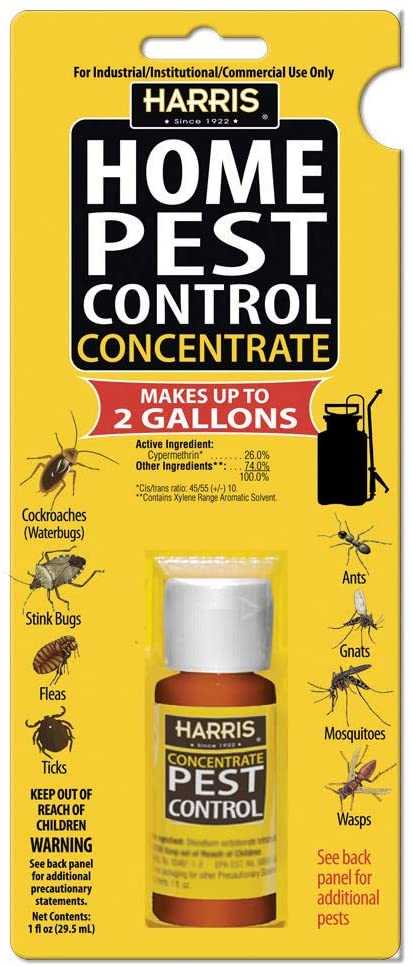A1 Bed Bug Exterminator Charlotte - Specialized Bed Bug Elimination
Wiki Article
Bed Pest Therapy Breakdown: Comparing Chemical Vs. Non-Chemical Solutions
In the world of bug control, specifically when managing the consistent issue of bed bugs, the selection between chemical and non-chemical treatment solutions can be a crucial one. Both methods supply unique benefits and downsides, influencing aspects such as effectiveness, safety and security considerations, and general cost. By analyzing the nuanced details of each approach, a more clear understanding of which path to seek in resolving a bed bug problem can be attained.Efficiency of Chemical Treatments
Chemical treatments for bed insect problems have actually been commonly acknowledged for their quick and powerful efficacy in getting rid of these insects. When thinking about the efficiency of chemical therapies, it is important to understand that they can give a quick and extensive option to a bed bug issue. Expert pest control experts commonly count on pesticides to target bed insects at various stages of their life cycle, consisting of adults, eggs, and fairies. These chemicals usually function by disrupting the bed insects' worried system, leading to paralysis and eventual fatality.Furthermore, chemical therapies have the benefit of supplying residual impacts, indicating that they can continue to get rid of bed pests even after the initial application. This residual activity is specifically helpful in combating any type of prospective re-infestations. Additionally, the rapid activity of chemical treatments can bring alleviation to individuals facing severe bed bug infestations, enabling them to regain control of their space rapidly.
Safety And Security Concerns With Chemical Solutions
One critical element that requires cautious consideration when using chemical remedies for bed bug therapy is making certain the safety of passengers and the setting. Exposure to specific chemicals used in bed bug therapies can lead to respiratory concerns, skin inflammation, or other adverse responses, particularly in people with pre-existing conditions or level of sensitivities.Moreover, the ecological impact of chemical solutions is an additional considerable factor to consider. Some chemicals made use of in bed bug therapies may be damaging to advantageous pests, wild animals, and ecosystems if they seep into the dirt or water supply. It is necessary to use chemical therapies sensibly, adhering to safety standards, and considering much less poisonous choices to alleviate these threats and make sure the effective and safe management of bed pest problems.
Advantages of Non-Chemical Approaches
Taking into consideration the potential safety and security worries and environmental impact connected with chemical solutions for bed bug treatment, checking out non-chemical techniques provides an encouraging alternative with numerous unique advantages. Non-chemical therapies are environmentally friendly, as they do not contribute to air or water contamination, making them a sustainable selection for parasite control.Furthermore, non-chemical remedies can be effective in targeting bed bugs, including hard-to-reach locations where chemical treatments might not pass through. Approaches such as warmth therapy, vacuuming, vapor cleansing, and cushion encasements offer detailed removal without the usage of unsafe chemicals. Furthermore, non-chemical methods can be less turbulent, calling for minimal prep work and enabling quicker reentry right into dealt with locations. Overall, selecting non-chemical bed bug treatment approaches not just prioritizes security and environmental management yet additionally makes certain comprehensive and efficient pest control.
Limitations of Non-Chemical Treatments

A1 charlotte pest control companies Furthermore, non-chemical therapies frequently require multiple applications to attain effective eradication. This can be taxing and might not constantly assure full removal of all bed insects and their eggs, especially in hidden or hard-to-reach places.
In addition, the success of non-chemical treatments heavily relies upon appropriate execution and thoroughness, which can be testing for individuals without specialist expertise. Inadequate application of non-chemical methods might lead to insufficient removal, bring about persistent problems and the demand for added therapies.
For that reason, while non-chemical therapies have their benefits, it is essential to acknowledge these restrictions and consider them when determining the most efficient technique for managing bed bug problems.
Price Contrast: Chemical Vs. Non-Chemical Options
Offered the limitations linked with non-chemical treatments, a crucial aspect to evaluate in the context of bed insect administration is the price comparison in between chemical and non-chemical alternatives. In comparison, non-chemical treatments like heat treatment or heavy steam can be extra pricey, with prices varying from $1,000 to $6,000 for an entire home. While the initial price of chemical treatments might appear lower, multiple therapies might be needed to completely eradicate the infestation, potentially increasing the total cost.Verdict

Thinking about the possible safety worries and environmental effect associated with chemical solutions for bed pest therapy, checking out non-chemical approaches offers a promising option with a number of distinctive advantages.Offered the limitations associated with non-chemical treatments, a necessary element to examine in the context of bed pest monitoring is the price contrast between chemical and non-chemical alternatives. In contrast, non-chemical treatments like heat therapy or vapor can be extra costly, with expenses varying from $1,000 to $6,000 for an entire home. While the preliminary price of chemical therapies might appear lower, multiple treatments may be needed to completely remove the invasion, possibly boosting the general expense.In verdict, when contrasting chemical and non-chemical bed pest treatment options, it is essential to think about performance, safety, benefits, restrictions, and price.
Report this wiki page